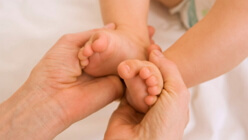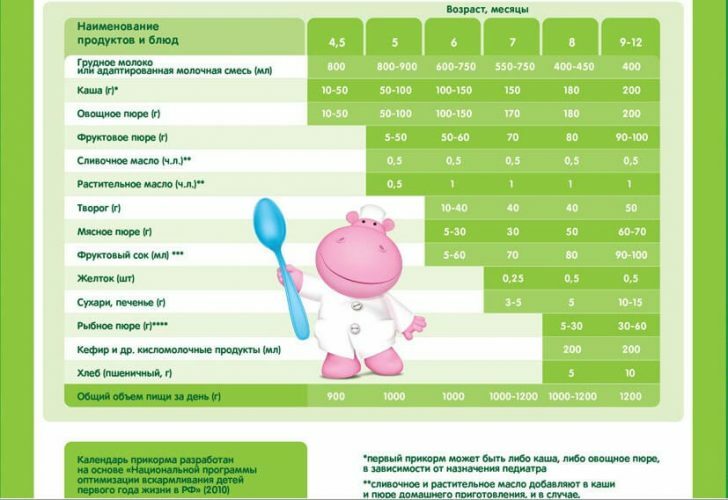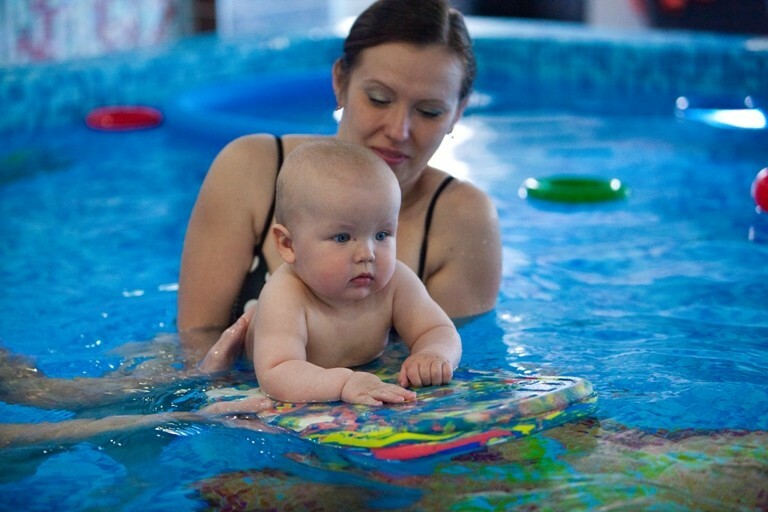Spasmophilia
 Spasmophilia is a rachitogenic condition, which is determined by pronounced hypocalcemia and its result is increased convulsive readiness. It flows latently and only in children predisposed to this state, for example, small, premature, unfolds into a violent clinical picture. The occurrence of this condition varies within 5% of children under two years.
Spasmophilia is a rachitogenic condition, which is determined by pronounced hypocalcemia and its result is increased convulsive readiness. It flows latently and only in children predisposed to this state, for example, small, premature, unfolds into a violent clinical picture. The occurrence of this condition varies within 5% of children under two years.
Spasmophilia and rickets can be considered as two phases of phosphorus-calcium metabolism. Another name for spasmophilia is rachitic tetany, sometimes it is considered as a calcipenic version of the rickets. The need for prophylaxis of spasmophilia to be adequate follows from the fact that an attack of seizures can lead to asphyxia.
Reasons for spasmophilia
The relationship between spasmophilia and rickets is known. A characteristic condition of spasmophilia is pronounced hypocalcemia. This condition is triggered, paradoxically, the beginning of the treatment of rickets "shock doses" of vitamin D. At the height of rickets decreased phosphorus, citrate, there is acidosis, calcium levels are usually normal or moderately reduced. As soon as the preparations of vitamin D are introduced, without correction of nutrition, the situation changes dramatically. Calcium from the blood begins to flow into the bone tissue, calcium intake from the outside does not occur, hypocalcemia develops. Ionized calcium falls particularly sharply.
There is a so-called threshold of calcium content in the blood of the child, when passing through which convulsive activity develops. In an infant this threshold of total calcium in the blood is 1.75 mmol / l, ionized in its form 0.85 mmol / l.
At the same time, a number of other biochemical indices decrease. The level of magnesium, chloride, sodium drops. Potassium significantly increases, and it is known to be a biological calcium antagonist. On
inhibition of parathyroid function said lowering blood parathyroid hormone( promotes bone resorption, t. E. Removal of calcium in the blood reduces the reabsorption of phosphate in the renal tubule, which contributes to a reduction in phosphorus concentration in plasma).The concentration of thyrocalcitonin increases, and it, as is known, inhibits the absorption of calcium in the small intestine and promotes its excretion in the urine. This hormonal situation is due to the fact that vitamin D has an antagonistic effect on the parathyroid glands. A homeostasis of calcium and phosphorus in the blood plasma is possible only with the normal operation of these small glands. As a result, calcium is even more absorbed into the bone, aggravating hypocalcemia.
Acidosis, characteristic of the course of rickets, is replaced by alkalosis.
The result of these metabolic features is an increase in neuromuscular excitability and convulsions in spasmophilia. Provokes an attack of convulsions factors may make a high fever, vomiting in case of poisoning or intestinal diseases, a baby crying, fright, perhaps the usual concern.
Spasmophilia is more common in the spring months, when the level of solar radiation is highest. In combination with taking high doses of vitamin D preparations with insufficient intake of calcium, it is also possible to develop spasmophilia.
Symptoms and signs Diagnosis spazmofilii
spazmofilii should be done if a child in the background flow of rickets, there is a tremor of the hands and chin, there is a sleep disorder, regurgitation, unmotivated anxiety, bowel dysfunction, dyspnea( irregular breathing).Together with this, sweating, tachycardia, ie, the disturbance of the adequate functioning of the autonomic nervous system.
Further, latent spasmophilia develops or its manifest form. In children under the age of one year, clonic convulsions predominate in spasmophilia, for children older than one year, tonic convulsions are more common.
laryngospasm combination with eclampsia is more common in the first half of a child's life, while the clinic karpopedalnogo spasm dominated in the second half.
Hidden spasmophilia occurs much more often, in most cases precedes the emergence of an explicit form of spasmophilia.
If an attack of spasmophilia occurs, emergency care should be given as soon as possible, since prolonged stay in tetany can lead to unfortunate consequences, such as damage to the higher nervous centers, delay in the child's mental development. A lethal outcome is possible, becauseIn the state of tetany during the attack, the muscles of the heart and the diaphragm stay. The cause of death can be a stop of cardiac activity or breathing.
Diagnosis of spasmophilia is, first of all, in the study of biochemical blood analysis, namely the composition and ratio of microelements. Hypocalcemia is combined with hyperphosphatemia, the level of magnesium, chlorides is reduced, the content of potassium is increased. Despite the course of rickets, there is alkalosis. During the diagnosis, it is important to consider all the factors relevant to the formulation of the correct diagnosis. This is the age of the child, and the time of year, clinical and radiological symptoms.
Spasmophilia must be distinguished from other conditions accompanied by convulsive alertness. These are such diseases as true hypoparathyroidism, febrile convulsions with posthypoxic encephalopathy and constitutional abnormalities, tetany of newborns, secondary hypocalcemia when feeding the baby with cow's milk.
A tetanus of newborns differs from spasmophilia in that its development occurs immediately after the birth of the child. Its causes are intrauterine oppression of parathyroid glands of the fetus by parathyroid hormone of the mother, as well as an excess of calcium in the mother's blood.
Secondary hypocalcemia occurs when a child is suddenly transferred from breast milk to breastfeeding. Perhaps, the emergence of secondary hypocalcemia in vomiting and fluid stool, chronic renal failure, with iatrogenic tetany( inadequate treatment with sodium bicarbonate inadequate administration of calcium preparations).
It is also necessary to differentiate the attack of laryngospasm with spasmophilia from stenosing laryngotracheitis in which stenosis develops at night on the background of acute respiratory viral infection or allergies. Laryngotracheitis is manifested by barking cough, inspiratory dyspnea, often with fever, aphonia.
An eclampsia attack with spasmophilia must be shared with epilepsy. Biochemical blood test( hypocalcemia, alkalosis) helps, anamnesis on which it is possible to determine the defects of feeding, care, prevention of hypovitaminosis D, and also the development of rickets.
Forms of spasmophilia
If prophylaxis of spasmophilia was inadequate, then one of the forms of spasmophilia develops. Allocate the following forms: explicit and hidden.
Explicit spasmophilia in its manifestations is divided into: laryngospasm;Eclampsia;Carpopedal spasm.
Hidden spasmophilia includes the following symptoms: Lusta;Tail;A symptom of Maslov;Symptom of Tissue;Erb's symptom.
The diagnosis may sound like this: spasmophilia, obvious form, eclampsia, carpopedal spasm. Or so: spasmophilia, a latent form.
On the hidden spasmophilia can be judged by the presence of a number of phenomena that indicate a tendency to the occurrence of seizures. The phenomenon described by Maslov is that a child with high convulsive readiness may experience respiratory arrest as a response to a minor injection. The breath stops breathing and lasts a few seconds. The phenomenon of Tissot - when squeezing the brachial nerve in the biceps muscle within three minutes, the spastic removal of the fingers of the hand leads them to the position of the "hand of an obstetrician".
Phenomenon of Khvostek - if you perform a diagnostic tapping between the zygomatic arch and the angle of the mouth, the muscles of the nose, mouth, and eyelid are contracted.
The symptom of Lust is the outward movement of the foot and its flexion from the back side when the peroneal nerve at the exit site is effaced.
Erb Symptom - muscle irritation with a galvanic current of 1-2 mA at a rate of 5 mA results in muscle contraction.
Explicit spasmophilia manifests itself in tonic and tonic-clonic seizures in the form of carppedal spasm, eclampsia.
It is possible to describe carpopedal spasm as a periodically arising tonic contraction of the muscles of the extremities, mainly the brushes and feet. The brush occupies the position of the "hand of an obstetrician"( the ring finger and the little finger are bent, and the large, index and middle fingers are straightened), the fingers can also be bent into a fist. Hands are lowered and bent at the elbows. Knee and hip joints in the flexion position, the arch of the foot assumes the position of plantar flexion. Trism of chewing musculature is possible. The attack is very painful. The condition can not stop until a few days. The attack, lasting up to several days, is complicated by swelling of the rear of the foot and hand. A carpopedic spasm can occur when changing a child, this is the most common provoking factor.
Eclampsia is the most unfavorable form of spasmophilia. In an attack of convulsions, all muscle groups are involved. It begins with twitching facial muscles of the face, muscles of the eye, the corner of the mouth. Then the twitching spreads to the muscles of the limbs. The respiratory muscles are involved in the process, the rhythm of breathing is disturbed. Due to the spasm of the chewing musculature, the patient begins to develop foamy sputum. Cold sweat comes out. It is not ruled out involuntary emptying of the intestine and bladder. The skin of the face turns blue, the consciousness is clouded. It is possible to stop the work of the respiratory and cardiac musculature. The duration of an attack of eclampsia is not inferior to an attack of carpopedal spasm and ranges from several hours to several days. Perhaps the occurrence of fever.
Laryngospasm is a sudden narrowing of the glottis in crying, fright, anxiety of the child. The child is frightened, catches the air with his mouth. Breathing becomes difficult and becomes hoarse. The skin is cold sweat, it becomes pale, cyanotic. The attack ends in a few seconds with a noisy breath and restores breathing, the child falls asleep. There is an attack more often in the afternoon, can repeat more than once. Usually ends favorably. In severe cases, asphyxia can develop.
Treatment of spasmophilia
If there are signs of spasmophilia the child must be hospitalized. In the treatment of this condition, a pediatrician and a child neurologist should participate.
Hypocalcemic spasms in spasmophilia require the provision of emergency measures. Seduxen anticonvulsants are administered 0.1 ml / kg IV or IM( GHB 100 mg / kg) or Magnesium sulfate 0.2 ml / kg. Magnesium sulfate is administered a solution of calcium chloride or calcium gluconate 1 milliliter per kilogram of body weight intravenously. Before the introduction of calcium chloride( gluconate), dilute 5% glucose solution at least twice.
Seduxen has an immediate effect, although its duration is short-term and is 30 minutes. It is possible to re-inject the drug into a vein, muscle or orally.
The effect of GHB after administration is noted at 3-10 minutes with intravenous administration and at 10-20 minutes with intramuscular injection. The action takes one and a half to two hours.
If there are signs of latent spasmophilia, then parenteral or electrophoresis administration of calcium preparations is preferable.
As an urgent measure for laryngospasm, it is possible to consider the effect of strong stimuli on the skin and mucous membranes of the child, for example, feeding to the nasal passages of a cotton wool moistened with ammonia, injection, pouring with cold water.
If necessary, artificial ventilation is provided. To combat hypoxia, 40% oxygen is used.
After relief of the emergency, they start pathogenetic treatment. It is necessary to determine the parameters of calcium in the blood as soon as possible. Then 10% of the chloride or calcium gluconate are injected intravenously: children under six months of 0.05 ml, children under one year of 0.5-1 ml, up to three years 1-2 ml. Further, children receive gluconate or calcium chloride through the mouth for 1 tsp 3 r. Per day preferably 40 minutes after eating. The course of taking calcium preparations is seven to ten days.
In addition to calcium preparations through the mouth, children receive a solution of ammonium chloride one teaspoon 4 to 6 times a day. The intake of ammonium chloride can be combined with the intake of a citrate mixture( citric acid + sodium citrate) at 5 milliliters 3 r./day in the form of 10% p-ra. The course of admission is ten to fourteen days. When determining the duration of taking drugs rely on the severity of the condition.
It is also necessary to regulate the feeding of the baby. For a period of seizures, a copious drink is prescribed in the form of weak tea, juices. This, so-called, hungry-tea pause. Further, in the diet it is necessary to limit cow's milk. It is extremely rich in phosphates, you can replace it with fermented milk mixtures, increase the volume of vegetable dishes.
In the after-drug spasmophilia, medication does not stop. For a period of six months, possibly up to one year, the prescription of drugs from the barbiturate group, for example, Luminal in the age-related dosage. In addition, the correction of signs of rickets continues.
It is also necessary to monitor the biochemical parameters of the blood and preventive recurrence of calcium intake.
During the recovery period, it is recommended to attend classes in physiotherapy exercises, a course of massage. The child must fully eat, more to walk in the fresh air.
Prevention of spasmophilia can be primary and secondary. Adequate treatment of rickets and early diagnosis of it are measures of primary prevention. Secondary prevention is aimed at preventing the development of the state of apparent spasmophilia, lies in the early detection of its latent form.
The prognosis for spasmophilia is favorable for life, with the exception of the rare cases of asphyxia leading to the death of the child. The consequences of prolonged eclampsia, perhaps, the child's lag in mental development.
In the second - third year of the child's life, the exchange of calcium and phosphorus acquires a stable character and the pathological process is completely eliminated.
Spasmophilia - which doctor will help ?If there is or only a suspicion of the development of spasmophilia, you should seek advice and treatment for such doctors as a pediatrician, a pediatric neurologist.



